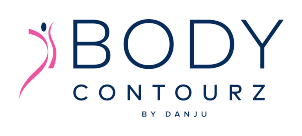What you don’t know can hurt you
We all age, and usually beginning in your early 30s and 40s, hormones become the issue. Food sensitivities increase, metabolism slows down, yet people continue to eat the same as they did when they were younger. As we age, our caloric needs also reduce. At most, I recommend a meal or two a day according to your needs. One can also snack healthily, do intermittent fasting, drink green drinks, and bone broth for in between meals.
Changes the Body Goes through After 40
If you are in the habit of eating 3,000 calories per day, the extra calories go to fat depositories and you gain weight. Additionally, between age 40-55 you gain an average of 15 pounds, factor in a 5% muscle loss beginning at age 30, and the resting metabolism drops, which means, you burn less calories. This spell a whole lot of weight gain if you continue to eat like you did when younger.
Women usually start to experience perimenopause a decade before the change of life (on average age 51). Falling estrogen levels can cause insulin sensitivity, which makes it harder for your body to control the amount of sugar in your blood causing spike and crashes, increasing your urge to snack—especially on inflammation-causing foods like carbs and sugar. If you watch your carbs, you can help reduce age-related insulin resistance and promote steady blood sugar levels. The addition of protein can also help prevent age-related muscle loss, and because the body has to work harder to digest than carbs, it increases your slow-burning energy.
For men, the problem can be Andropause . This can cause men to gain weight in the stomach area and chest. After 40, it’s near impossible to lose weight through diet alone, when hormones like testosterone tend to dip. As a result, the decrease in muscle mass likewise decreases the calories your body burns during exercise.
The Truth about the American Diet
Unfortunately, the information out there about what to eat is not right for everybody, even if you are over forty. For years the American heart association got it all wrong, their pyramid was practically upside-down and its use is what brought America into the diabesity pandemic. To say that a well-balanced diet is half fruit and vegetables, a portion of lean meat, then a whole grain or starchy veggies, a small amount of fat is just false. That diet may work for some but not for all because our biochemical makeup is different per individual.
Your Metabolic Type
If you’re a returning reader, you may remember my article comparing Keto and the Metabolic Typing diet. No two bodies are the same, so no diet should be the same either. In the same family, we can have two sisters, let’s say aged 40 and aged 50, and one is a fast oxidizer who thrives on red meat and one is a slow oxidizer who gets all day energy from a vegan lifestyle. They are both on metabolic typing, per their biochemical makeup. Each gets energy from different fuel sources. If you switched them, their diets would make them feel sluggish, irritable, depressed, and foggy to name just a few things.
Summary
After men and women enter their 40s, weight becomes a big concern, and it has been a growing concern all across America and the UK where obesity and Diabetes numbers are through the roof. So, in order to combat this problem, we must be informed. The truth about diets is that not everyone can be on the same diet across the boards and get the same results, that’s pie in the sky. But, if you are informed and you really take into account what your hormones are doing, handling them, and what your metabolism is doing, finding your metabolic type and sticking to it, you have a much better shot at achieving your health and weight goals than if you worked out five hours a day and dieted. Of course, I do recommend reducing your calories if your lifestyle dictates it, and you’re needing less calories. But, When the problem falls on hormones and improper dieting, we can find the culprit and take action.


